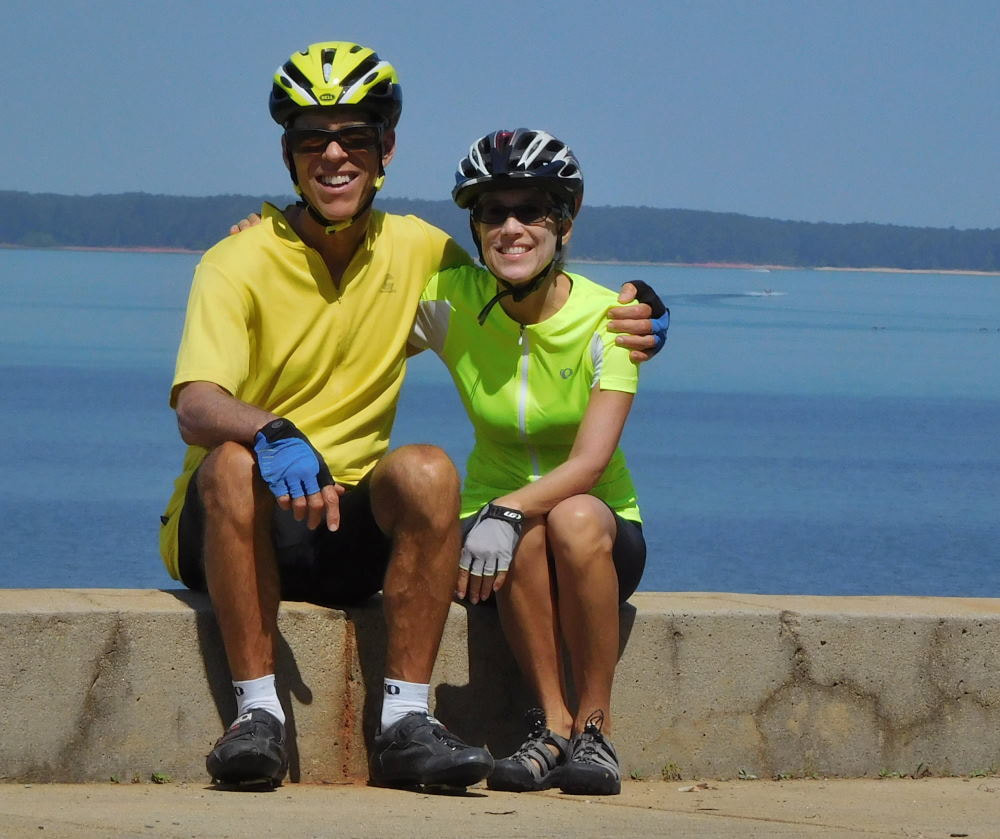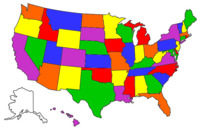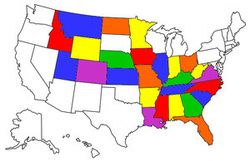- Traveling Twosome Blog
- BeBelize - Our life in Belize (2011-2013)
-
Earlier adventures (2003-2010)
- First Belize Trip 2010
- Fall Sail Cruise Aboard Logos 2009
- Conch Key 2007
- Charleston Sailing School 2007
- Biscayne Bay Sailing School 2007
- Key Lime Sailing Club 2006
- Southwest Parks 2006
- BEYC/Jost van Dyke, BVI 2005
- Offshore Sailing School 2004
- Annapolis Sailboat Show 2004
- Finger Lakes 2004
- NY State Bike Tour 2004
- Biras Creek, BVI 2003
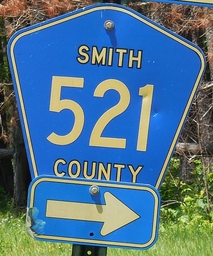 Since we spent the last two years either in Mexico and traveling around the US in a small car, we couldn't take our mountain bikes along; we simply didn't have the room. So they had been living in my (Emily's) mother's basement, woefully neglected. It was time for that to change. With some excitement, we finally pulled them out while staying at Marathon Lake campground in Bienville National Forest in the beautiful state of Mississippi, because we knew some of the roads would be unpaved. We'd learned our lesson about attempting gravel roads on our Bike Fridays already. Once burned, twice shy! Barry figured out a promising route using Google Maps. He said it would be around 10-15 miles, which sounded about right for a maiden voyage. However, some of the roads are not marked, and we ended up missing an important right turn onto a gravel road. We thought the road we saw was associated with a landfill next door, but it turns out that it was the road we should have turned on. Unmarked, of course. So we pedaled on and and on down a paved road, looking for our right turn. We tried two different unpaved national forest roads, which were beautiful, but both ended in dead ends. The first was a mile each way, no biggie; but the second was 5.5 miles each way. That's a detour! 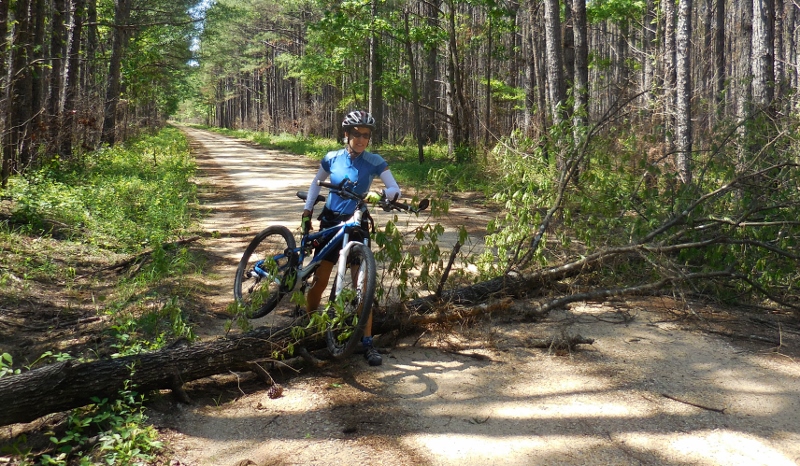 Expecting a shorter ride, I had not taken enough water and NO snacks since I'd just eaten lunch. D'oh! It was turning into another of our (in)famous adventure days. After backtracking on the 5.5-mile road, we decided to head back the way we'd come. We were still not sure about the road beside the landfill, so took a longer "sure thing" route back on paved roads. We ended up with over 33 miles on the day and over three hours on the bikes! In retrospect, it now seems funny. But I was one happy camper to get back to our site -- and water and food. One would think I would better anticipate and prepare for these inadvertent adventures. Maybe I have finally learned this lession!
5 Comments
We were just sitting outside after lunch at lovely Payne Lake Recreation Area in the Talladega National Forest in Alabama, minding our own business, when a truck pulled up. Out bounced two young and perky Forest Service workers to present us with quite an honor: we had been chosen as "Campers of the Week"! I have no idea why we were chosen other than the fact that our rig had an out-of-state license plate, and they get a lot of locals in this rural campground. I had to fill out a form answering a few questions, including our favorite hobby (bicycling, of course) and why we liked Payne Lake. They took this photo of the three of us. We were presented with a Forest Service thermal coffee mug, and later got our fifteen minutes of fame as we were introduced on the Payne Lake Recreation Area Facebook page.
Since then? Well, we haven't received any other recognition nor honors at other campgrounds we've visited. But we'll never forget our one week of shining celebrity. ;-) Public campgrounds like those managed by the National Forest Service or Corps of Engineers are great for nature lovers (like us), with peaceful forests, birds-a-singing, privacy, and placid lakes. Camping in such places is just good for the soul. But being far from cities and interstate highways, what these campgrounds often do lack is strong cell signals. On the road, we get our internet using "Mifi", which is wi-fi provided by a Verizon Jetpack device we pay for monthly. This little device is basically like a cell phone with no voice capability, data only. In the remote campgrounds we enjoy, today's fast "4G LTE" signal can be hard to come by -- and you quickly learn not to take it for granted when you do have it! In many of the places where we've stayed, we've been lucky to get two bars of "3G" signal (slower but generally usable if you're patient). Sometimes the signal even drops down to "1X" -- an even older, slower technology and nearly impossible to use to go online. Some campgrounds are so far off the beaten path that you get no signal at all. Coleman Lake Recreation Area, as wonderful as it was in other ways, was one of these. So, we started testing. We took our little Jetpack with us on bike rides and hikes until we found a signal. We found several spots miles away from our site where we could pull in a signal, but we wanted something closer and more convenient, so we could briefly check email and do a little travel planning each day. Eventually we found a spot just a 3/4 mile hike away, up higher and more open than our campsite. We could generally pull in two bars of 3G signal here, which was just enough to get by for about thirty quick minutes of internet time. Score! Would you go this far to go online?
|
Emily & BarryWe're a long-married, early-retired couple who are currently traveling as nomads with no fixed home base. After years of living in North Carolina (Emily's home state), we spent 18 months living oceanfront on Ambergris Caye, Belize, a year road-tripping the US in a Honda CR-V, a year in Playa del Carmen, Mexico, and are now roaming North America in our 32' motorhome, Pearl, following warm weather whenever possible. Archives
July 2019
Favorite Travel Blogs |
- Traveling Twosome Blog
- BeBelize - Our life in Belize (2011-2013)
-
Earlier adventures (2003-2010)
- First Belize Trip 2010
- Fall Sail Cruise Aboard Logos 2009
- Conch Key 2007
- Charleston Sailing School 2007
- Biscayne Bay Sailing School 2007
- Key Lime Sailing Club 2006
- Southwest Parks 2006
- BEYC/Jost van Dyke, BVI 2005
- Offshore Sailing School 2004
- Annapolis Sailboat Show 2004
- Finger Lakes 2004
- NY State Bike Tour 2004
- Biras Creek, BVI 2003
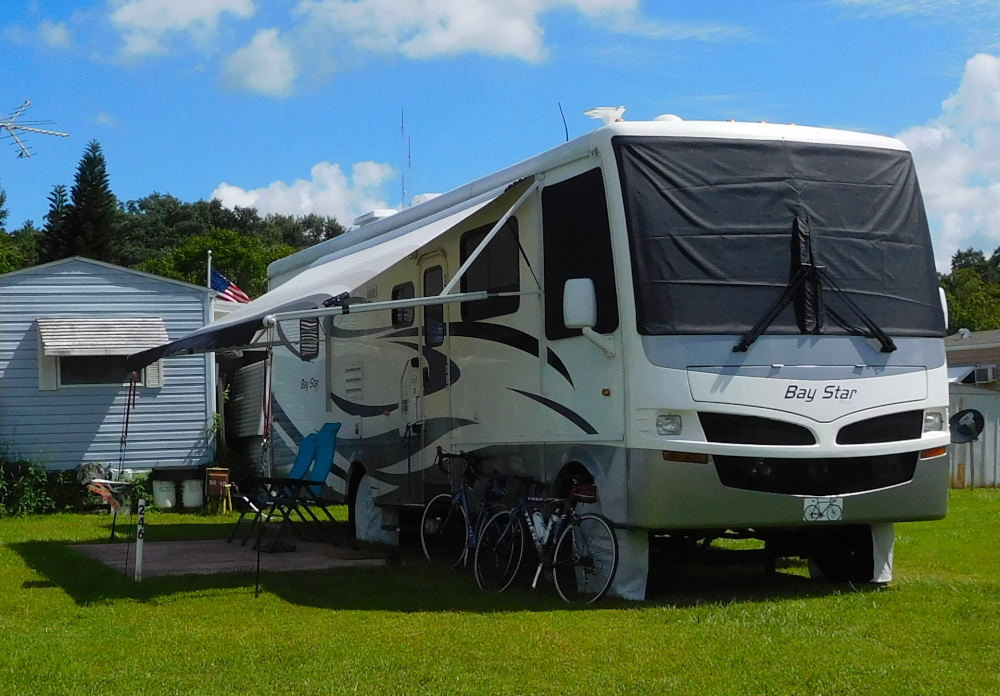
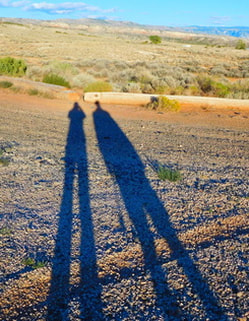
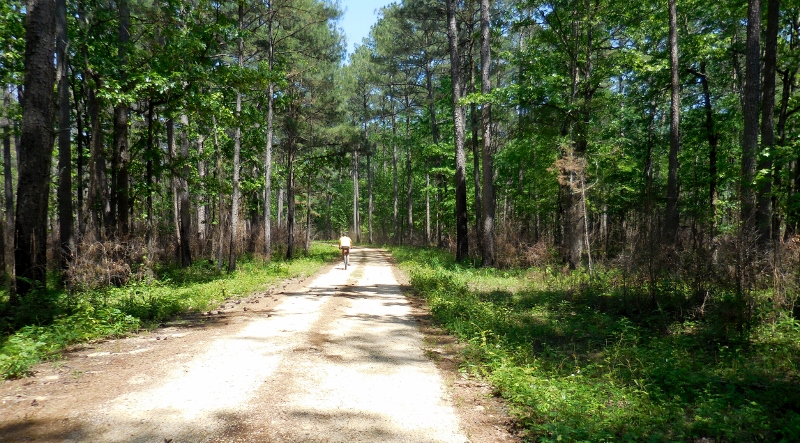
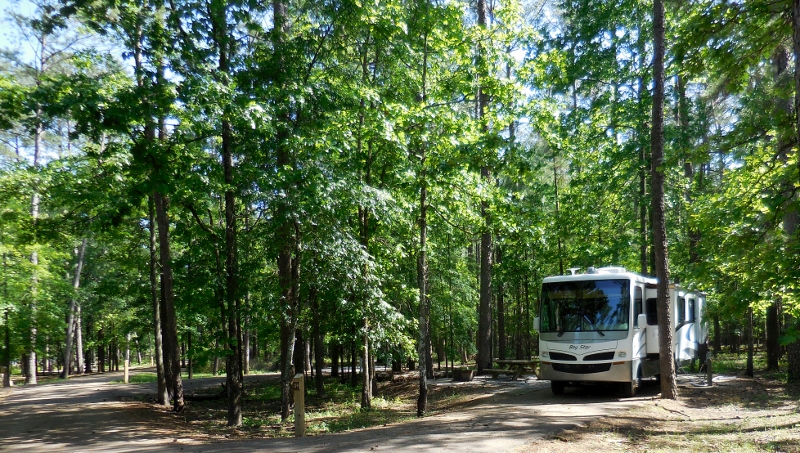
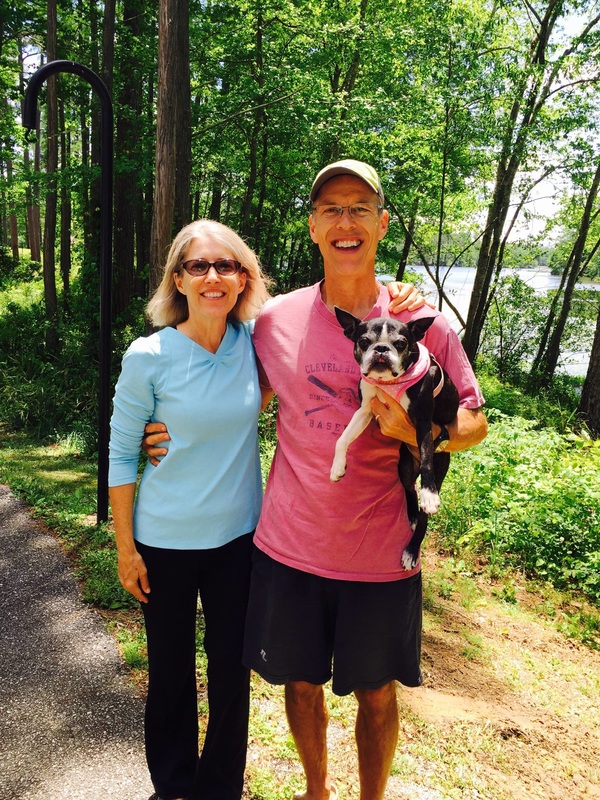

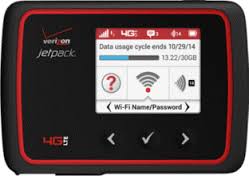
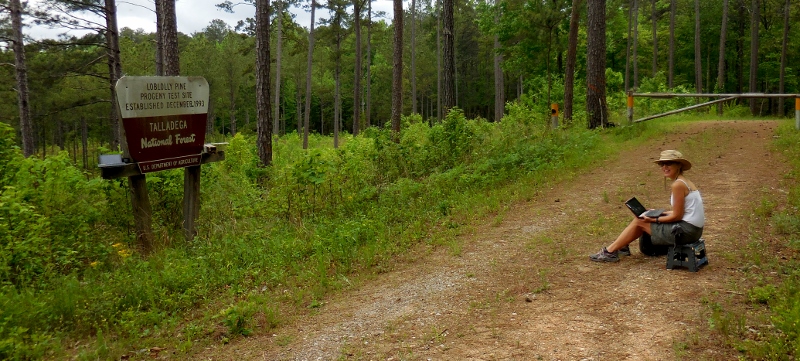
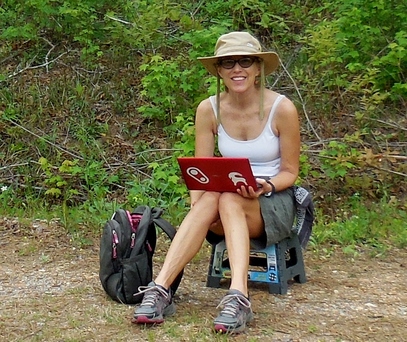
 RSS Feed
RSS Feed
